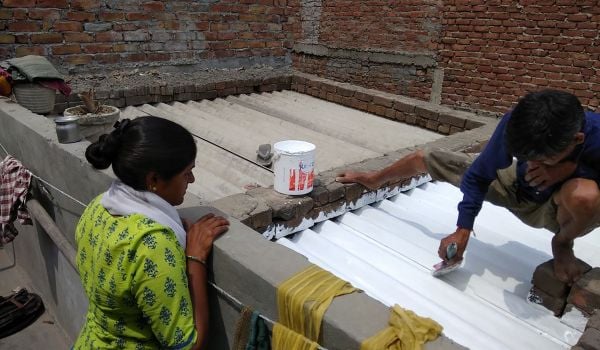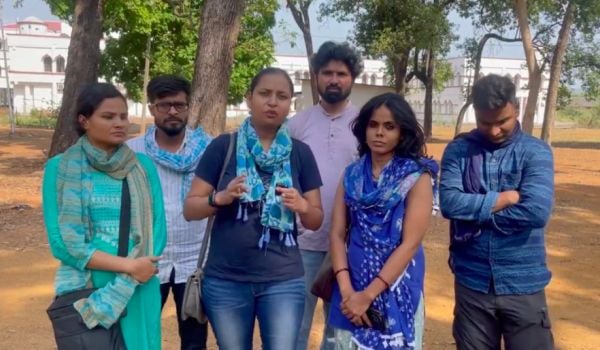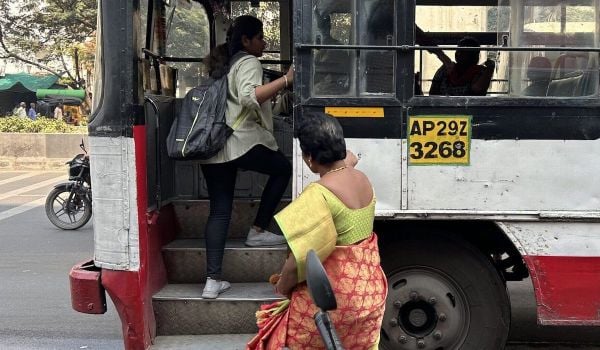Earlier this month I reviewed Amit Chaudhuri’s Calcutta: Two Years in the City, a book whose lack of a clear overall thesis perplexed me. For a work that appeared to be aimed at a Western audience, the limited context it provided made many chapters difficult to follow.
For help understanding what Chaudhuri might have been driving at, I got in touch with Supriya Nair, a journalist from India who has spent some time in Calcutta. Previously a staff writer and critic with Verve magazine and Mint, Nair is currently associate editor at The Caravan, a magazine based in New Delhi.
Next City: So, what did you think of Chaudhuri’s book? Had you read some of his other works?
Supriya Nair: He’s one of the finest literary critics I’ve read outside the classroom. His fiction is wonderfully sculpted and colored, although it’s sometimes seen as a bit bloodless. Which is a charge readers might easily lay at Calcutta’s door, too. I know you didn’t like the book very much.
NC: I just found it perplexing. I am happy to be convinced that I missed what was good about it.
Nair: I found myself in two minds about it. I started to read it just as I’d moved from Bombay to Delhi. Which you’ll have noticed, those cities are the madwomen in the attic of this book. I found the two cities civilizationally different. Indeed, as an aside, I find far more in common between Bombay and Calcutta, where I’ve lived briefly, than between Bombay and Delhi.
Having just moved, I found myself in a strange position of having just crossed a big boundary. Like you’re suspended in water. And I found a lot to love in Chaudhuri’s impressionistic, aphoristic style, especially in the early chapters. He’s a very watchful writer. And that’s the great strength of this book, in some ways, but also related to the what’s less than satisfying about it, which is that it’s not the work of a reporter.
NC: I want to come back to that, but I want to hear what you’re second mind is first.
Nair: I went back to the book over the last couple of days, and can understand what you mean when you say you can’t figure out its motivation. It does seem a bit — whimsical, perhaps? But I loved that he chose to write a book that was temporal and fragmentary and individualistic. The second mind, now. The second mind surfaced as I read the more political chapters. The one about the election, for example.
NC: Those were baffling. He gave you no real context to speak of.
Nair: Yes, I also thought they — and we — would have benefited from a modulation of the outlook. I suppose that’s what I mean when I say it’s not the work of a reporter. When I think of the encounters that Chaudhuri writes of, which make up this book, I sense a man who’s very good at seeing and observing. But Chaudhuri the listener isn’t in evidence here. It’s the work of a man whose ear is tuned to some inner melody at the expense of the orchestra.
NC: Are you saying that when it comes to politics, his mind becomes a bit more closed than when he talks about places or relationships or street life?
Nair: I don’t think we know enough from the book about his mind, but I think the premise of the book becomes a bit strained when he trains his focus on the throng of life.
A friend, who is also a critic, was talking to me about this the other day. She’s from Calcutta, and I’m a Calcuttaphile. She told me, “I don’t understand how he could make one of the most interesting cities in the world so boring.” But I disagree. Because — and here’s an argument you’re free to dismiss as tenuous — I think the key to the book is not so much in the title, Calcutta, as in the strap, “Two Years In The City.” If I’m well disposed to the book, it’s because I see “Two Years In The City” as a declaration of its subjectivity.
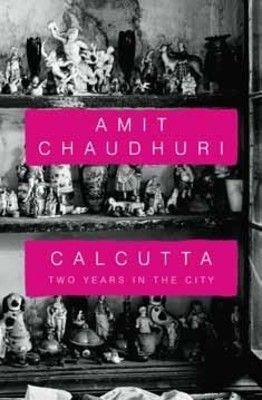
NC: If I understand you right, the book is a series of moments that Chaudhuri unpacks, an impressionistic piece that just looks at certain parts of the city. That’s what the overall agenda seems to be.
Nair: Yes, exactly. It’s about a moment in time, and about Chaudhuri in this moment.
NC: What’s your relationship to Calcutta? How long did you live there and when?
Nair: I lived there for about five months in 2007, studying in a short diploma program at Jadavpur University, and I had the best time. I’d just come away from two years in a job that I wasn’t suited for, in a new city to which I hadn’t warmed very much. I felt right at home in Calcutta’s metropolitanism.
NC: Did you recognize your Calcutta in Chaudhuri’s book? That’s the funny thing about cities. There are many cities in every city.
Nair: No, I have to say our Calcuttas are quite different. There’s a general sense, in Calcutta as well as in the rest of India, that the best years of the city are past it, you know.
NC: He makes it sound like a very sad place in decline, yes. A place for grandparents.
Nair: But how can a vast city of millions, the capital of all eastern India, be anything but alive and vibrant?
NC: It’s a fair point. Chaudhuri may just not have had access to the city that’s working.
Nair: What Calcutta has in abundance to rival any Indian city, except perhaps my own Bombay, is what Swapan Chakravarty, currently director of the National Library in Calcutta, calls its “great urban commons.” Its streets are overflowing with people, public transport, commerce and light. If a successful city is one in which you can go out and find a community in strangers, in passing transactions, then Calcutta is certainly one.
NC: You get a little of a sense of that in the second chapter. It’s definitely an aspect that I had wished he’d spent some more time in.
Nair: Yes, you’re right. He doesn’t make the connection himself. But do you remember that moment, early on, where he says that going back to England always makes him feel like he’s dying a little, and India represents life?
NC: In a way, it brings me to my objection to the eighth chapter, on kaajer lok, the servant class. I understand that the household help system he describes is not as brutal as slavery, but it doesn’t sound good, either. It sounds like servants feel as though they can skip out on work with impunity because they are paid such subsistence wages that they have no hope of bettering themselves anyway. It made me very uncomfortable.
Chaudhuri doesn’t get at all introspective there. He doesn’t ask why he needs the help in India when he didn’t in England. He doesn’t ask if he ought to be a little better to them. But most importantly: He doesn’t look into the matter. He doesn’t talk to his neighbors. He doesn’t visit the kaajer lok’s neighborhoods. There must have been some political discussion about their situation, but he never addresses it.
Nair: Yes, I think there’s a rich vein of criticism to be mined on the class politics of books like Calcutta. Many people, writers and readers, tend to broadly expect that the modernist project of self-interrogation leaves little space for the living, breathing mess of this stuff. But that needn’t be the case at all, not even in a book like this — given that Chaudhuri, as we see in the second chapter on Park Street, is happy to spend time watching and, yes, listening to people he doesn’t know, even in a general sense.
That’s something I liked about the second chapter — how clearly Chaudhuri makes us aware of his own discomfort at being a fish out of water, with the men at the tea stall, and the woman whom he takes to the chemist. I suppose one way to counter your observations would be to ask: Yes, but does he need to do all this? Or is the chapter meant to leave you with the overall sense that Indians treat their domestic labor very badly, which is quite true of us as a society?
NC: I would accept that, but I still don’t think it was as interesting as it could have been. By that point I was getting pretty frustrated with the book. It felt really self-indulgent by then.
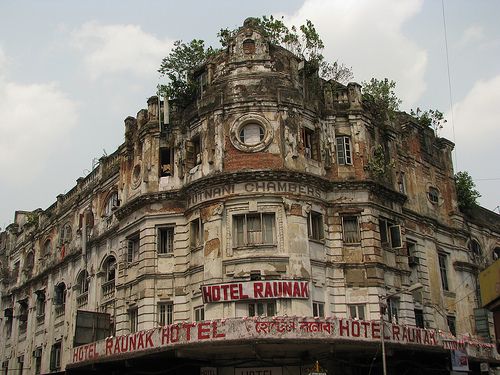
Credit: McKay Savage on Flickr
Nair: The Italian chapter kind of peeved me, too.
NC: If he’d gone out and explored the matter of servants a bit more, I might have forgiven him some. Yes, the Italian chapter was really strange. I don’t need to know about Italian cooks. I’ve lived around Western cooks my whole life.
Nair: Yes, that and his writing about kaajer lok both made me wish he was writing with the high sensitivity of the first few chapters, rather than with a sense of performance. But here I should interject that you’re probably not his ideal reader.
NC: Interesting. Who is then?
Nair: In that, you’re not the reader he’s expecting to read this and nod along in recognition. Who might that be? Other Calcuttans? Bengalis?
NC: But he writes in English, for a New York publisher?
Nair: Yes, but that’s a bit limiting. Anyone who publishes with a New York publisher these days can safely expect that they’ll find a vast majority of their readers in India, especially if they’re from South Asia themselves.
NC: I guess I thought he was writing a book for Westerners who wanted a taste of his part of India, who liked to learn about places that they’ve not visited.
Nair: Oh, that’s interesting. Because as I was reading it, I certainly thought it was for people like me, from metropolitan India. Perhaps we’re not so different from each other, though.
NC: That definitely makes a lot more sense. You could leave more gaps if you expected the bulk of your readers to be Indian.
Nair: You’re right to think that it faces a possibly non-Indian audience as well. Look at stuff like “Basti is an Urdu word meaning neighbourhood….” Perhaps it’s most accurate to say that writers like Chaudhuri write for a certain metropolitan audience everywhere in the English-speaking world. Kind of like The Guardian website.
NC: So, what was your favorite chapter of this book, and why? I found “High Tea” the most charming, though in a way I thought the approach in “Italians Abroad” captured the method that I think could have made the whole book better.
Nair: Yes, High Tea is very evocative — like the best parts of his novels, I think. I liked the first three chapters very much. Chaudhuri’s so good at this sort of piercing introspection. And when he’s sort of letting his relationship with Calcutta unfold, questioning, changing his mind, going back and forth, tracing a feeling over time — he’s very good.
You know…names can be a bit contentious in Indian public life, particularly names of cities and streets. Do we keep to colonial principles? Do we abandon them for something that’s more reflective of our history? But isn’t that just political expediency? So on and so forth. But Chaudhuri, for example, gets it superbly right. For a place that you call home, the most valid reasons for what you call it are personal ones. When he says this:
I myself can’t stand calling it any other name but Calcutta when speaking in English; just as I’ll always call it Kolkata in Bengali conversation. Is this because we — cities and human beings — have contradictory lives that flow in and out of each other? To take away one or the other name is to deprive the city of a dimension that’s coterminous with it, that grew and rose and fell with it, whose meaning, deep in your heart, you know exactly.
NC: It’s true here, too. Symbolic matters often cause the fiercest fights.
Nair: Yes, you’re very right about that, and we should pay close attention to symbolism and its meanings. But know, too, in private, that these meanings and symbols are likely to change from person to person, and perhaps from generation to generation.
Up next is Smart Cities: Big Data, Civic Hackers, and the Quest for a New Utopia, by Anthony Townsend, which goes on sale October 7.
Brady Dale is a writer and performer living in Brooklyn. Find him on Twitter.
Brady Dale is a writer and comedian based in Brooklyn. His reporting on technology appears regularly on Fortune and Technical.ly Brooklyn.


